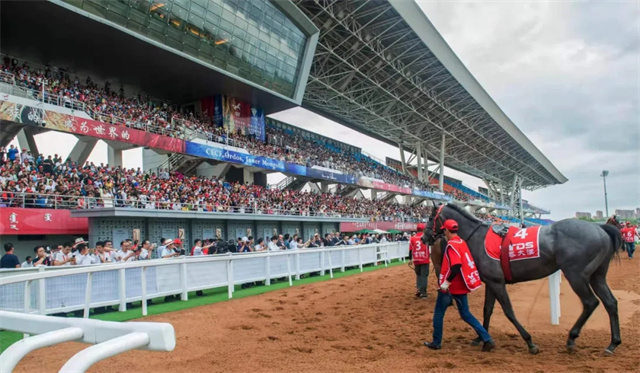NASA lost its Mars helicopter. Now it's looking into a Martian plane.
NASA wants to hear far-out,关键字2 unconventional, and out-of-this-world aerospace ideas.
The space agency's Innovative Advanced Concepts (NIAC) program — which encourages "visionary ideas that could transform future NASA missions with the creation of breakthroughs" — funds research into a diversity of ambitious proposals it finds compelling. For example, NASA is currently funding an idea (still onlyan idea) to construct a telescope the size of Washington, D.C., on the moon.
Now, the program has released a new batch of innovative concepts that it's chosen for further theoretical development, and included is a plane designed to fly around Mars — and stay aloft in the extremely thin Martian atmosphere. The proposal is called MAGGIE (short for Mars Aerial and Ground Intelligent Explorer), and it's an aircraft envisioned to provide unprecedented exploration of Mars' surface.
You May Also Like
And unlike planes on Earth, the craft is designed to take off and land vertically, like a helicopter.
"You can land any place you feel is interesting," Gecheng Zha, the director of the CFD (Computational Fluid Dynamics) and Aerodynamics Lab at the University of Miami, told Mashable.
SEE ALSO: NASA will land daring spacecraft on a world 800 million miles awayThe Martian plane is a novel idea, but perhaps not as wild as it sounds. NASA is only spending some $175,000 on 13 different awardees for this early "Phase I" conceptual research. But it comes with the opportunity for NASA to further develop such aerospace technology and move innovation to the next phase — which means even more funding and support.
"It can't just be science fiction."
"Anything proposed to NASA has to be very, very well thought out," Zha, who is also the president and founder of Coflow Jet, the aviation technology company that proposed the MAGGIE craft, emphasized. "It has to have scientific merit. It can't just be science fiction."
A plane on Mars
The Martian aircraft, which would be powered by the solar panels spread across its wings, has a strong Mars influence: NASA's Ingenuity helicopter — a NIAC-graduate and the first craft to make a powered, controlled flight on another planet. The small, solar-powered experimental chopper, with four-foot-long rotor blades that spun a blazing 2,400 revolutions every minute, made over 70 successful flights before meeting its demise on Jan. 25 after a rough landing. Originally, engineers hoped it might fly five times, if at all.
"We were enlightened by Ingenuity," Zha said.
Yet a plane would be able to carry significantly more weight than a future Martian helicopter, and would fly more efficiently on a distant world where craft would almost certainly need to rely on the sun for energy, Zha explained. (A nuclear-powered endeavor, like the Perseverance rover, requires a heavy engine. That would make lifting into the air difficult.)
 The Ingenuity helicopter flying on Mars in August 2023. Credit: NASA / JPL-Caltech / ASU / MSSS
The Ingenuity helicopter flying on Mars in August 2023. Credit: NASA / JPL-Caltech / ASU / MSSS  The Jezero Crater on Mars, a dried-up river delta now explored by NASA's Perseverance rover. Credit: NASA
The Jezero Crater on Mars, a dried-up river delta now explored by NASA's Perseverance rover. Credit: NASA Flying anything on Mars is a great challenge. That's because, compared to Earth, the Martian atmosphere is quite thin. Its volume is about 1 percent of Earth's, making it difficult to generate the lift needed for flight. Yet the MAGGIE plane's narrow double-wings are designed (conceptually) to produce many times more lift than conventional aircraft on our planet.
Once in the air, the plane would cruise at some 60 meters per second, or nearly 135 mph. That's significantly slower than, say, the commercial jets you're used to flying on. But on Mars, flying slower is imperative. Flying quickly burns too much energy.
"You don't want to fly too fast," Zha emphasized.
Related Stories
- NASA reveals its X-plane. It will fly over the U.S. at extreme speeds.
- Why flying a helicopter on Mars is so damn hard
- The best telescopes for gazing at stars and solar eclipses in 2024
- NASA video shows spectacular recreation of pivotal Mars event
- NASA finally opened its prized asteroid canister, and you can look inside
Beyond its extraordinarily thin air, Mars has another notable obstacle for aircraft. There are no runways. And Martian astronaut missions certainly aren't going to have the time and ability to clear land and boulders to create an airfield. So the craft must take off and land without one.
"You don't want to fly too fast."
The trick is in the wings' flaps. The propellers are always facing forward, but by turning the wing flap down to 90 degrees, the airflow from the propellers creates lift. "That will get the plane up vertically," Zha explained.
One day, perhaps, a plane like MAGGIE will robotically explore the Martian surface from some 3,280 feet (1,000 meters) for interesting places to land and capture samples. It will be a compact plane — MAGGIE is currently designed with about a 26-foot (7.85 meters) wingspan — so it could fit and fold inside a large rocket. But it would allow unprecedented exploration of the Red Planet, a world that once gushed with water and could have potentially hosted primitive life — if life ever existed on Mars, that is.
Planes on Mars may also prove essential for Martian travel later this century and beyond. After all, it's hard to get around on a world without an Interstate Highway System.
"We provide the possibility to move around," Zha said. "There are no roads there."
(责任编辑:何日君再来)
- ·环球马术冠军赛团体赛伦敦站:上海小天鹅队零罚分完赛
- ·2023年山东青岛中考作文题目:材料作文
- ·最新书籍排行榜前十名 2025十大畅销书有哪些
- ·渤海油气开发新突破!这个大气田累产天然气超10亿立方米
- ·终极战力排行盘点:从汪大东开始
- ·Best gift for kids deal: National Geographic Rock Tumbler Kit on sale for $19 off at Amazon
- ·Fire 7 Kids tablet deal: Get 41% off at Amazon
- ·国足收官战23人名单出炉!
- ·如鸢2024最新兑换码汇总 兑换码使用方法介绍
- ·《脑航员》工作室新作 有生命的灯塔《keeper》10月18日发售
- ·武侠视频:开局盘点十大修仙武学
- ·《LuminariaDarkEchoes》PC版下载 Steam正版分流下载
- ·14 Monuments and Museums Only in Idaho
- ·《InfraSpace》PC版下载 Steam正版分流下载
- ·G3铜陵长江公铁大桥主桥顺利合龙
- ·寻找每轮行情的领涨龙头
- ·ZoomIn: ศึก "สุกี้เดือด" สงครามราคา เกมนี้ใครเจ็บตัวสุด? : อินโฟเควสท์
- ·大乐透开2注1000万无追加 奖池余额15.34亿元
- ·这一波“小鬼”王琳凯巴黎街拍 吹爆国货尔克奇弹
- ·春季养肝绿色为先:香拌茼蒿血珊瑚草














